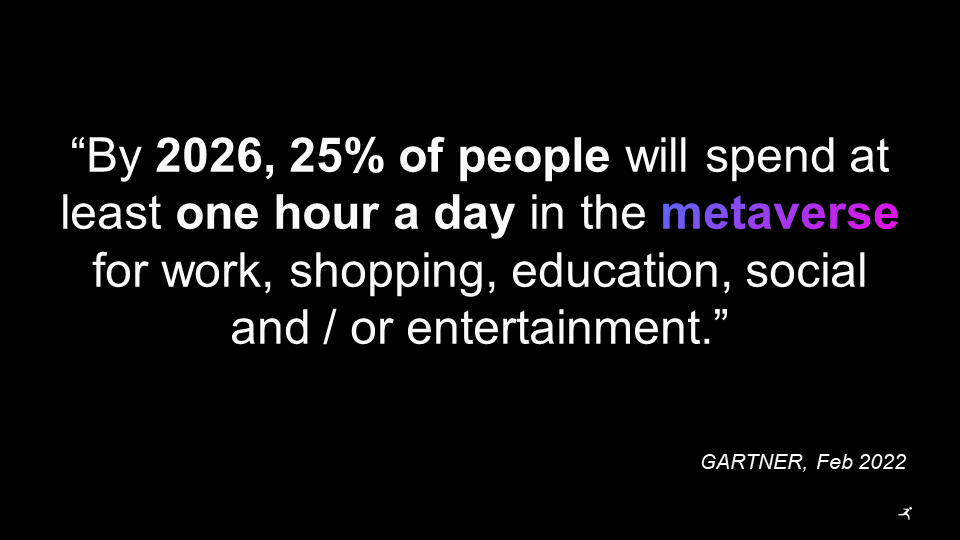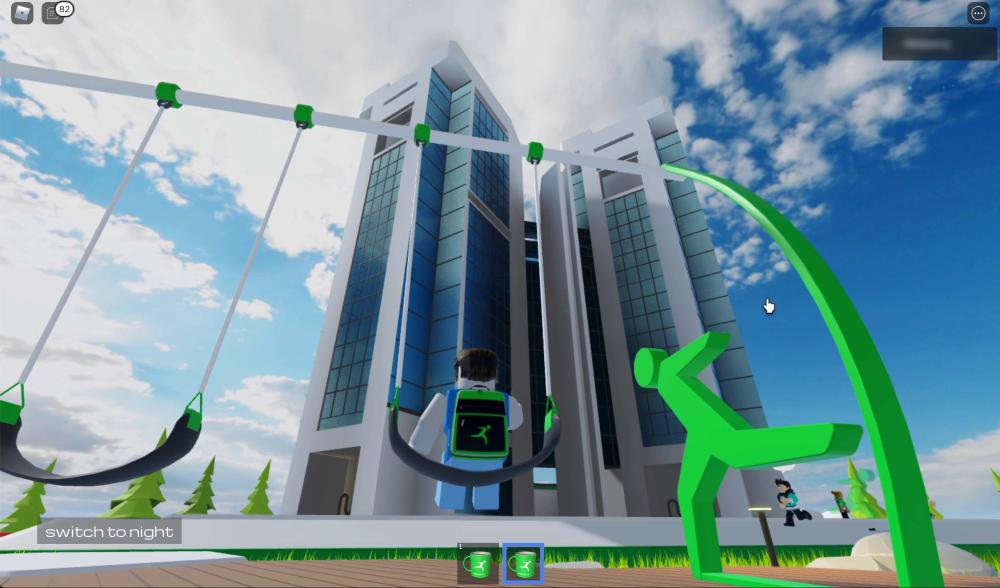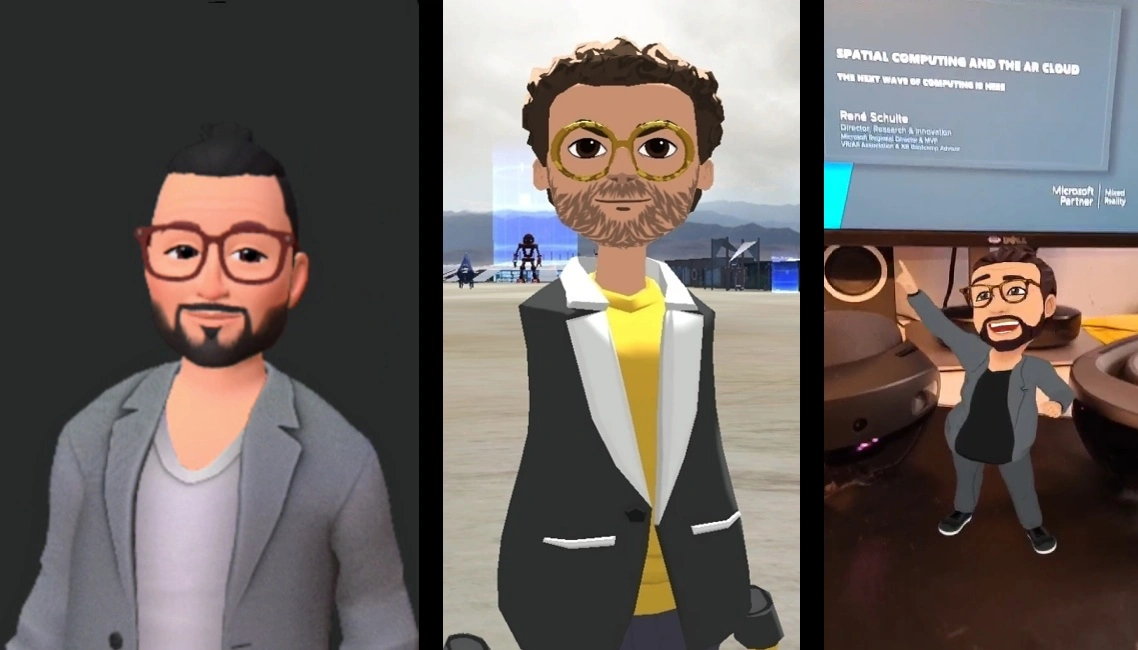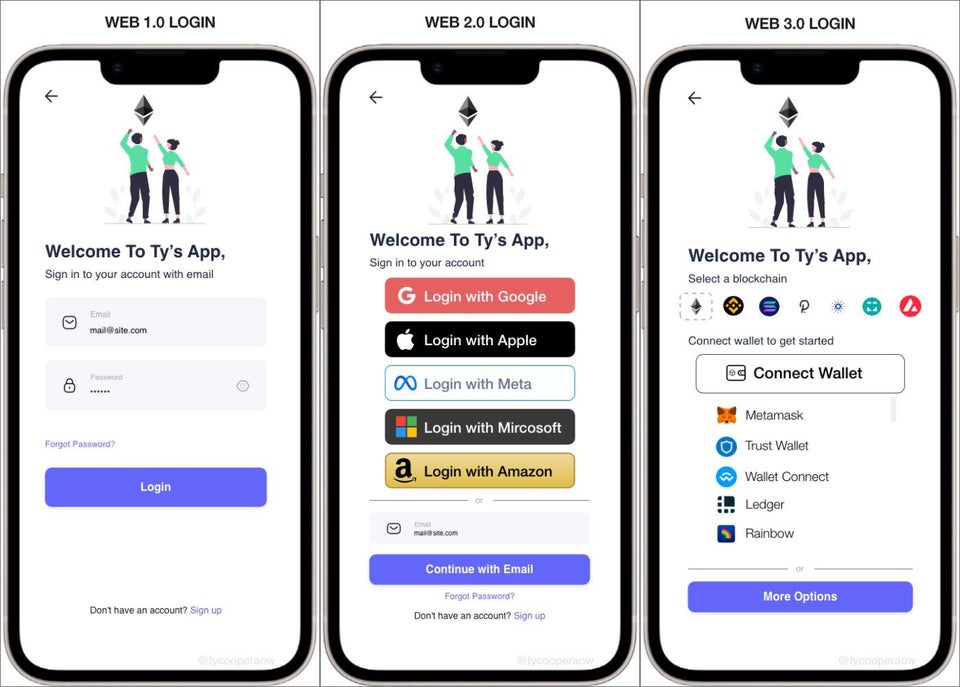In this post, we are going to dive deeper into the virtual presence, decentralized identity part including NFT, web3 and all other things related to the Metaverse. This is not just relevant for knowledge workers but also for frontline workers.
We live in the age of hybrid and remote work models where far more people than ever before are working from their home office or whichever place they like. One of the challenges with this is that we, as humans, are not represented in the digital world comparable to our representation in the real physical world. This does not just include work but also expands into private life like healthcare with real-time remote patient monitoring etc. This aspect was covered in our Digital Twin of the Person post from April 2021, among other topics like COVID-19 passes / certificates, and other relevant usage for decentralized identify and virtual presence like avatars.
In this post, we are going to dive deeper into the virtual presence, decentralized identity part including NFT, web3 and all other things related to the Metaverse. This is not just relevant for knowledge workers but also for frontline workers (FLW). For example, to get real-time information for better workforce management, scheduling and similar tasks related to people and resource management. This can also be combined with wearables that allow facility entry but could also monitor health in a safe and privacy-aware manner, powered by edge cloud and big data analytics like Azure Synapse. Part of the Digital Human Twin can also be biometrics that can be used for authentication or attendance count. For example, a short voice snippet which can be used to train a custom AI model to recognize users and authenticate them only by their voice in 2 seconds scaling up to thousands of users.
This is also relevant for Spatial Computing with Augmented Reality (AR) and Virtual Reality (VR) where users are represented as avatars for virtual presence. This can further be extended with haptic feedback to increase the user immersion which enhances memorization for VR trainings.
Enterprise Metaverse
In this talk, we will also touch on The Metaverse relevant for frontline workers (FLW) and not just for so-called knowledge workers. These Metaverse experiences could come in various flavors and do not have to be a virtual world that many associate with the term Metaverse these days. In our November 2021 article, we not only covered different use cases and implementations with benefits for professional users with the Enterprise Metaverse, but also the Real-World Metaverse, which is essentially a Digital Twin of the physical world, the AR Cloud, a digital content layer mapped and persisted to physical objects and locations in the real world. Virtual content can be pinned with a Spatial Anchor in the physical world and shared cross-platform and over time. The highest value out of Metaverse solutions can be achieved when the real world is interconnected with the digital world with persistence, otherwise the Metaverse is just another word for large online (gaming) worlds and that’s not new. The true benefit of the Metaverse is the embedding of the real world into computing and this is also highly relevant for FLW, IoT devices, robots and much more.
Gartner® recently predicted “25% of people will spend at least one hour per day in the Metaverse by 2026.” This is quite an optimistic prediction but might become true if you consider the potential of the Real-World Metaverse with AR and the Enterprise Metaverse via VR and 2D devices for immersive business meetings and better collaboration, plus the huge potential for consumers with engaging digital worlds.
 Gartner prediction that 25% of people will spend at least one hour per day in the Metaverse by 2026.
Gartner prediction that 25% of people will spend at least one hour per day in the Metaverse by 2026.
The Metaverse building blocks of Spatial Computing, AI and decentralized protocols are now mature enough and the growth opportunities are large, touching aspects of our work and life in all horizontals and verticals. Even banks like JPMorgan are investing in their Metaverse presence and bets metaverse is a $1 trillion yearly opportunity as it becomes first bank to open in virtual world. Also Bloomberg predicts "The global Metaverse revenue opportunity could approach $800 billion in 2024 vs. about $500 billion in 2020”. Therefore, it is no surprise that most companies are starting to invest into Metaverse solutions, and we at Valorem Reply are also heavily committed and have been leveraging and building various solutions since day one, providing ROI for our customers. We also constantly share our knowledge and best practices at global conferences. Just recently I was invited to a TV interview at Arirang TV for the 1-hour program “2022: Year of the Virtual Renaissance”. The show covered AI, the Metaverse with Spatial Computing, VR, AR and is worth watching to get an overview and hear various angles from experts.
Arirang TV is airing in 101 countries while reaching 150 million households with their English-speaking TV station. The show was broadcasted on January 14th, 2022 (Friday at 8PM KST).
Immersive workspaces will also play an important role for better online meetings and we touched on this topic in March 2021 and again in our November 2021 article. We at Reply are currently exploring all solutions on the market and I had a few immersive hour-long business meetings in various Metaverse platforms. I’ve used VR, although these meetings could be joined in 2D as well, but the engagement in VR was much better, and I personally noticed that my memorization from these meetings is significantly higher than from a typical video call.
The solutions are growing but the business value is already here for corporations and enterprises. Therefore, it’s no wonder that Microsoft is also highly committed to their Mesh Metaverse, Mesh for Teams, AltspaceVR, Mixed Reality and HoloLens offerings, as Alex Kipman (CVP of AI, Mixed Reality) and Jeff Tepper (CVP of M365 Collaboration) both recently shared here and here. Mesh for Microsoft Teams will be an entry point for the Enterprise Metaverse where companies can set up their own Corporate Metaverse spaces. Mesh for Teams is a gateway and brings the Metaverse to 270 million monthly users that already use Teams and enable a new approach to remote and hybrid work, where they can start in their comfort zone with 2D Metaverse experiences and could then make the leap into 3D with VR, since the true power comes with the digital worlds where corporate spaces in stereo 3D provide higher immersion and business value.
Corporate spaces can also be created in large online gaming worlds with millions of users. This can be seen as an early form of Metaverse experiences where companies can provide a public or internal branded space to engage with customers and employees, just like our Reply space in Roblox.
 Corporate virtual world with Reply towers in Milan in the Roblox Metaverse.
Corporate virtual world with Reply towers in Milan in the Roblox Metaverse.
Virtual Presence
These Metaverse worlds regardless of platform all have the core item of the Metaverse implemented: A digital human representation with a virtual presence, usually as an avatar. For example, with Mesh for Teams, users will have a unique, personalized avatar and are able to join any Teams meeting and regular video calls, being represented as their own avatar. The avatar, as a virtual presence of the digital identity, is becoming the new social media profile picture and is a crucial personalized element for Metaverse interactions. The challenge will be the centralized nature of the current Metaverse platforms built by large tech companies. The avatar and the identity are linked to the platform which means users will have to create avatars for each platform without open interoperability. That means not just extra work but also whole different visual styles that are not shared between each other and a disconnected visual appearance without persistence between platforms.
 Meta, AltspaceVR and Bitmoji avatars of Rene Schulte next to each other, showing the issue of heterogenous visual representation on various platforms.
Meta, AltspaceVR and Bitmoji avatars of Rene Schulte next to each other, showing the issue of heterogenous visual representation on various platforms.
What users really want is an open interop with persistence foremost on the avatar level, so they can take their Digital Human visual presence with them while surfing different Metaverse spaces and platforms. The physical identity is a very important aspect of every human being, and this can be applied to the Digital Human as well, where avatars must become interoperable so users can share their visual representation between Metaverse spaces. Decentralized identity systems based on blockchain could be a solution for this, where platforms don’t own the user’s identity or store their virtual presence, but the user himself is the owner with their private key. In tandem with Metaverse, there’s currently a lot of hype with the Web3 standard, which is trying to achieve decentralized identity and content ownership where the platform technically does not own the content that users create, but the user himself. Beside the hype cycle of NFTs, Metaverse and web3 aspect this tech also has true potential for Digital Humans and we believe it will enable new models also for corporations and consumers as well. Decentralized identity systems powered by blockchain have the potential to maintain the user’s Digital Human identity including the virtual presence avatar across Metaverse spaces.
 Web 1.0, Web 2.0 and Web 3.0 identification compared where Web3 uses decentralized blockchain for identification. (Source: https://billprin.com/2022/01/03/real-problems-web3-solves.html)
Web 1.0, Web 2.0 and Web 3.0 identification compared where Web3 uses decentralized blockchain for identification. (Source: https://billprin.com/2022/01/03/real-problems-web3-solves.html)
Blockchain and similar decentralized protocols might become important for the identity ownership and together with NFTs, could be used for linking the actual avatar asset, so it is ensured that platforms don’t own the avatar but the user, who identifies with his unique key wallet. Furthermore, this mechanism could be used for decentralized transactions of virtual assets, including avatar fashion, which apparently is a growing market. Retailers and fashion brands are already entering the market and not only luxury brands like Gucci that sell virtual handbags, sneakers and more are very successful and are making millions in the Metaverse.
 Reply-branded hoodie concept in AltspaceVR
Reply-branded hoodie concept in AltspaceVR
Avatars these days are typically simple 3D models often Comic-like stylized, but there are already more realistic representations like EPIC’s MetaHumans providing photorealistic Digital Humans which are not really scalable for large online worlds with today’s resources. Even AI solutions exist with platform interop like Ready Player Me that can turn a simple profile picture into a 3D avatar getting closer to the actual visual look of the person. Often though the uncanny valley can be observed where the more realistic avatars don’t work as supposed and rather result in an unpleasant emotional response to the subject since they are not 100% realistic.
Progress in AI computer vision and camera hardware will make volumetric video with real-time 3D holograms a more practicable solution for certain scenarios like Metaverse events. We explored that field intensively already in 2016 with our HoloBeam solution which might be another way to be represented in the Metaverse in the future.
An important part of the virtual presence and how users are seen in these large online worlds is also the responsible usage of these and ensuring good digital ethics. Avatars provide a great opportunity also for diversity & inclusion since people can represent themselves digitally with their true self and identity. While this is great to use an avatar that does not necessarily have to reflect the physical appearance of the user, it can also be problematic with anonymization. Already today, sometimes users get harassed in online games where abusive users hide behind anonymized avatars. This must be taken care of with ethical and responsible regulations providing a safe space for every human being. AltspaceVR for example recently removed certain hubs / spaces and added features to make AltspaceVR a safer place. Decentralized identity might help for this aspect as well and the decentralized Digital Human does not only have to be a visual representation but can be even more useful aggregating heterogeneous data to provide homogenous real-time insights. This could be powered by data from wearables and other sensors. The broader Digital Twin of the Person (DToP) has potential not just for the Metaverse as we discussed in this earlier post. All of that requires the highest level of security and privacy technology to make it a pleasant future for everyone and not turn the Metaverse into a dystopian OASIS.
We cannot wait to hear about what you have in mind and the goals you want to achieve to drive the future of your business with outstanding Metaverse experiences and Digital Humans! If you are interested to hear more, please reach out to marketing@valorem.com to schedule dedicated time with our industry experts.








